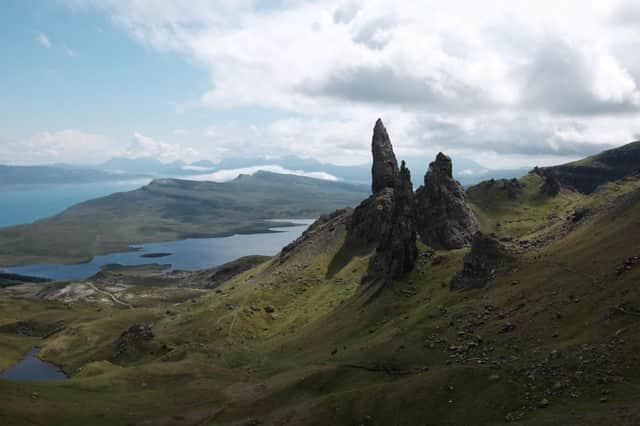The Viking wipeout of language and culture on the isle of Skye


Joseph Thomas Ryder from the University of Bergen, a PhD candidate, presented his findings in an online lecture on the Viking age on Skye at the Highland Archaeology Festival.
He said that Norse speakers were arriving on the islands from around 795AD, mainly from western Norway, with the new arrivals bringing fundamental changes to island life.
Advertisement
Hide AdAdvertisement
Hide AdAt the time the Vikings showed, the Skye landscape was populated by Pictish-era subterranean structures and dotted with burial cists.
Mr Ryder said: “When the Norse arrives, the landscape completely changed. We see an end to Iron Age roundhouses and you start to see Norse longhouses that were built also identically to the type you see in Scandinavia.
“There is also a return to Pagan burials and there is also evidence of Norse law and land ownership.”
Crucially, the language of Skye was almost completely wiped out by the colonists, he added.
He said: “We see that Norse didn’t only import their architectural and burial customs, but also their language. The oldest datable place names on Skye are all Norse.
“The replacement of place names from Celtic to Norse without any real trace of pre-existing names is something unprecedented . I can’t think of any other examples.
“In England, when the Anglo-Saxons colonised, they retained a lot of the Roman place names. In North America, the colonists retained a lot of the Native American place names.
“But for some reason on Skye , the pre-Norse place names have been replaced by Norse.
Advertisement
Hide AdAdvertisement
Hide Ad“This had led to certain theories about what happened to the people who were there before the Norse – the Picts, the Gaels and Irish Monks.
“There are some scholars who argue that this was an act of genocide, of ethnic cleansing.
“On the other hand, there are some who argue that, well, it probably wasn’t very peaceful but there was a complicated process of assimilation of the Picts in Norse society.”
He said that 86 per cent of place names on Skye were of Old Norse origin.
Mr Ryder spoke of several archaeological finds which indicated that high-status Vikings were living on Skye, including the Storr Hoard found near the Old Man of Storr around 200 years ago.
The 10th Century hoard contained 19 dirhams, silver coins from the Islamic emirates of central Asia, which indicated trade routes that connected Scotland across vast distances at the turn of the first millennium.
Mr Ryder said the area of Tote on the Trotternish peninsula was likely one of several Viking centres of power on Skye.
Here, evidence of a rare burial cremation was found with grave goods including a 10th Century Irish Sea battle axe and a bead of ivory which may have been the product of walrus hunting.
Advertisement
Hide AdAdvertisement
Hide AdMr Ryder said the burial site was also close to the Norse ‘thing’ or meeting place at Glenn Hinnisday.
He said he believed Skye had several centres of Viking power given the island setting alllowed for coveted control of seafaring routes and harbours.